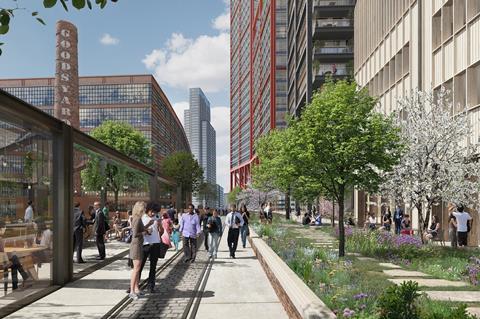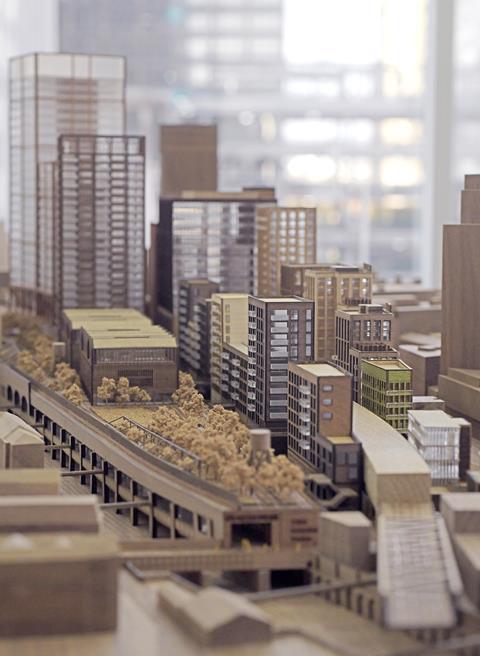Benefits of FaulknerBrowns masterplan outweigh harm, says Sadiq Khan

Sadiq Khan has approved Ballymore/Hammerson’s controversial and long-running £800m proposals for Bishopsgate Goodsyard after a virtual GLA planning hearing this afternoon.
The London mayor’s decision came after two hours of listening to planning officers, supporters and objectors and half an hour’s deliberation – plus hundreds of pages of reports and almost 10 years of argument.
Summing up, he said of the proposals for the 10-acre City fringe site on the edge of Shoreditch: “The benefits of this development outweigh the negative aspects.”
These included 500 homes at a time of housing shortage, many of them for “affordable” rent, “affordable” workspace at a time when there was as yet no evidence covid would permanently impact demand, public realm improvements and a park.
Some of the disadvantages he conceded included the scale of the development – which includes a 29-storey Eric Parry office block on Shoreditch High Street – loss of daylight in neighbouring properties and damage to heritage assets.

The brownfield site, which has lain empty for decades, has been masterplanned by FaulknerBrowns and includes individual elements designed by Parry, Buckley Gray Yeoman, Chris Dyson and Spacehub.
It was recommended for approval by the GLA last week.
An earlier iteration of the proposals, which featured 1,400 homes and taller towers by PLP, were called in by Khan’s predecessor Boris Johnson in 2015 and withdrawn after GLA officers said they could not recommend it for approval.
In exchanges with planning officers and councillors from local authorities Hackney and Tower Hamlets – from whom decision-making powers had been taken by the mayor – he established broad agreement that the new scheme was better although he appeared at times to have little interest in their more nuanced arguments.
>> From 2019: New plans go in for Bishopsgate Goodsyard
>> From 2018: Time for fresh thinking at Bishopsgate Goodsyard

Afterwards Paul Rigby, a partner at FaulknerBrowns Architects, said: “Our vision for the future of Goodsyard transcends generations, celebrates and reuses heritage and creates a mixed-use environment with a truly unique identity. In the context of a post-covid recovery, it has never been more important that we plan to create balanced neighbourhoods that will better promote heath, wellbeing and a sustainable future.
”This masterplan does just that; bringing together housing with jobs, alongside new cultural spaces and significant new public realm for the community to enjoy, including one of central London’s largest new parks. The designs carefully configured to create new streets that integrate with the grain of the local area, providing a car-free environment around a key transport station that actively encourages walking and cycling, securing the sustainable future of The Goodsyard for the benefit of many generations of Londoners to come.”
Lucy Rogers of campaign group Reclaim the Goodsyard which opposed the plans said they were disappointed by the decision.
She added: ”Jules Pipe [deputy mayor of London and former mayor of Hackney] and Sadiq Khan have handed over public land to build office blocks and a hotel, achieving just 90 affordable social rented homes. They are closed to all arguments other than housing units and content that the scheme may deliver no additional affordable homes than the rejected plans in 2016. It is clear that this mayor has no concern for the East End and its people, which is to the detriment of London as a whole. His decisions are destroying London.”
















3 Readers' comments